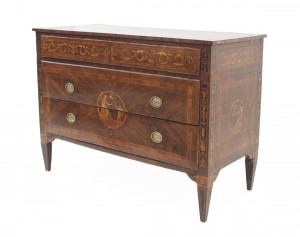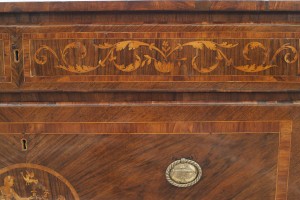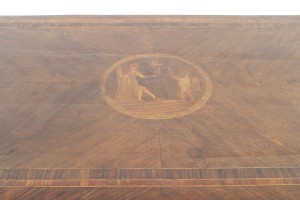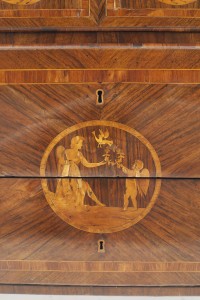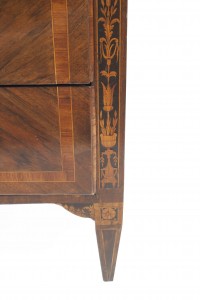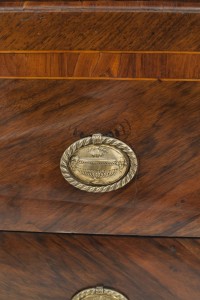X
{{ modalTitle }}
PLEASE FILL IN THE REQUIRED FIELDS.X
X
{{ modalTitle }}
Choose one of the options below.X
ITEM SUCCESSFULLY
ADDED TO PROJECT
Italian Neo-Classic Walnut Commode with Marquetry
 Italian
Italian Neo-classic
Neo-classic Tables, Cabinets & Case Goods, Dining Room
Tables, Cabinets & Case Goods, Dining Room Console/Wall Tables, Dresser/Chests, Sideboards and Buffets
Console/Wall Tables, Dresser/Chests, Sideboards and Buffets
Newel Warehouse
32-00 Skillman Ave
Long Island City NY - 11101
 (212) 758-1970
(212) 758-1970
Italian Neo-Classic Walnut Commode with Marquetry

Newel Warehouse
32-00 Skillman Ave
Long Island City NY - 11101
 (212) 758-1970
(212) 758-1970
 Tables, Cabinets & Case Goods, Dining Room
Tables, Cabinets & Case Goods, Dining Room Console/Wall Tables, Dresser/Chests, Sideboards and Buffets
Console/Wall Tables, Dresser/Chests, Sideboards and BuffetsNeo-classic
Neo-classic refers to the second revival of classic design for interior decoration in the 18th century. This style was inspired by excavations of Pompeii and Herculaneum that begun in 1738. Common motifs include dolphins, lyres, and urns.
Medallion
A circular or oval frame having within it an ornamental motif often resembling a metal or decorative design.
Commode
French form mimicking an English chest-of-drawers, dating from the mid 17th-century and very popular in the 18th century. Fashion greatly determined variances in styles and decoration, but commodes generally are wider than they are tall.
Marquetry
A flush pattern produced by inserting contrasting materials in a veneered surface. Rare, grained, and colored woods are usually used, but thin layers of tortoiseshell, ivory, mother-of-pearl, and metals are also seen. If the pattern is of a geometric nature, it is called parquetry.
Walnut
Walnut is a type of wood that can be identified by its rich brown colors and firm and even texture. Walnut is considered one of the finest woods due to its beautiful and unique coloring, strength, and ability to be shaped. Walnut is used for both lumber and veneer.
Neo-classic
Neo-classic refers to the second revival of classic design for interior decoration in the 18th century. This style was inspired by excavations of Pompeii and Herculaneum that begun in 1738. Common motifs include dolphins, lyres, and urns.
Medallion
A circular or oval frame having within it an ornamental motif often resembling a metal or decorative design.
Commode
French form mimicking an English chest-of-drawers, dating from the mid 17th-century and very popular in the 18th century. Fashion greatly determined variances in styles and decoration, but commodes generally are wider than they are tall.
Marquetry
A flush pattern produced by inserting contrasting materials in a veneered surface. Rare, grained, and colored woods are usually used, but thin layers of tortoiseshell, ivory, mother-of-pearl, and metals are also seen. If the pattern is of a geometric nature, it is called parquetry.
Walnut
Walnut is a type of wood that can be identified by its rich brown colors and firm and even texture. Walnut is considered one of the finest woods due to its beautiful and unique coloring, strength, and ability to be shaped. Walnut is used for both lumber and veneer.
Neo-classic
Neo-classic refers to the second revival of classic design for interior decoration in the 18th century. This style was inspired by excavations of Pompeii and Herculaneum that begun in 1738. Common motifs include dolphins, lyres, and urns.
Medallion
A circular or oval frame having within it an ornamental motif often resembling a metal or decorative design.
Commode
French form mimicking an English chest-of-drawers, dating from the mid 17th-century and very popular in the 18th century. Fashion greatly determined variances in styles and decoration, but commodes generally are wider than they are tall.
Marquetry
A flush pattern produced by inserting contrasting materials in a veneered surface. Rare, grained, and colored woods are usually used, but thin layers of tortoiseshell, ivory, mother-of-pearl, and metals are also seen. If the pattern is of a geometric nature, it is called parquetry.
Walnut
Walnut is a type of wood that can be identified by its rich brown colors and firm and even texture. Walnut is considered one of the finest woods due to its beautiful and unique coloring, strength, and ability to be shaped. Walnut is used for both lumber and veneer.




